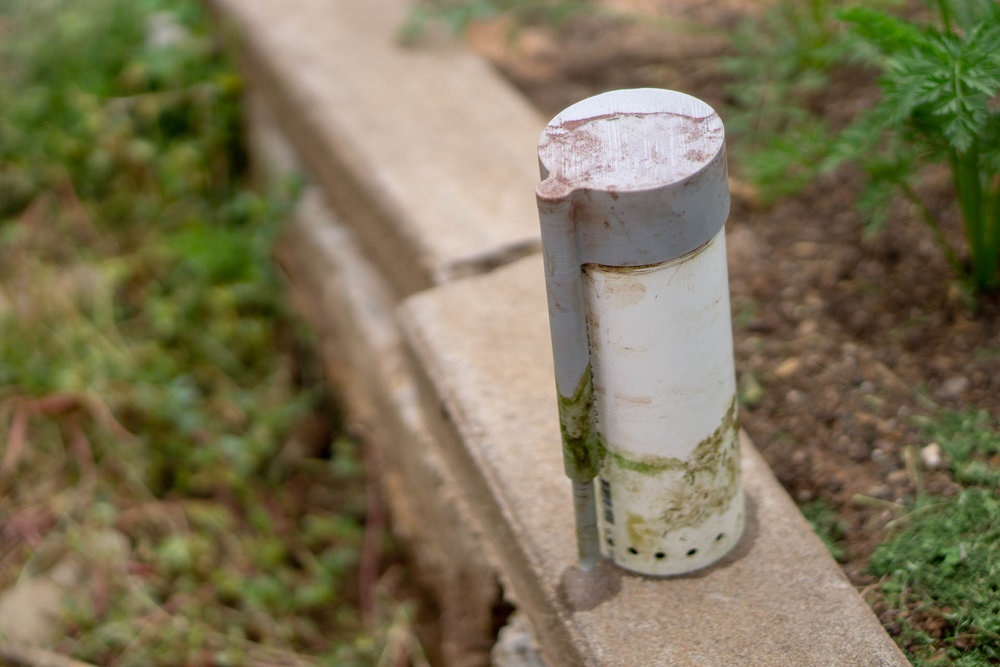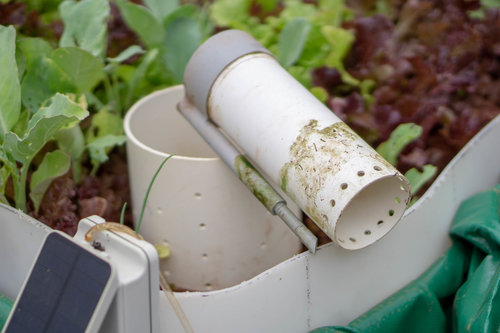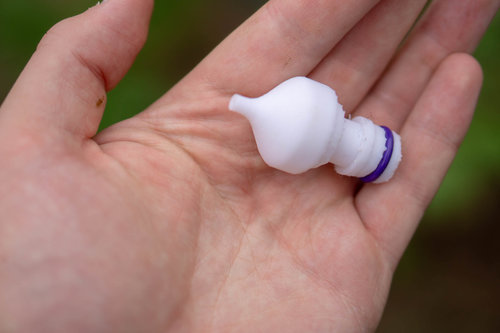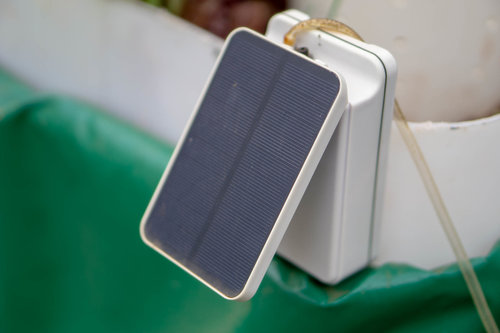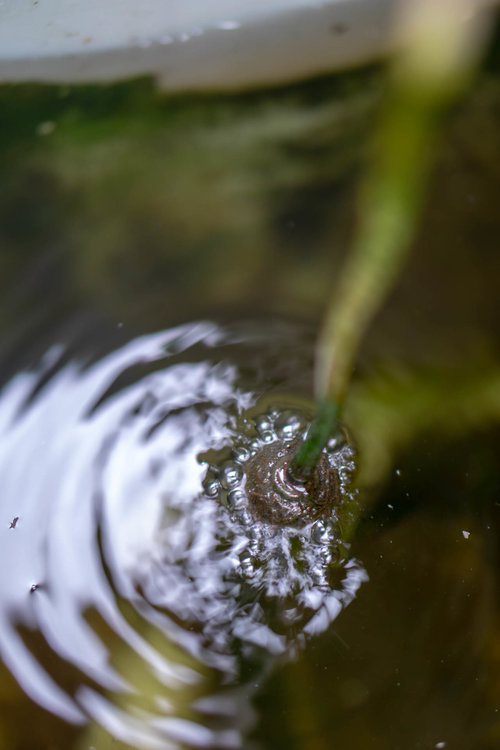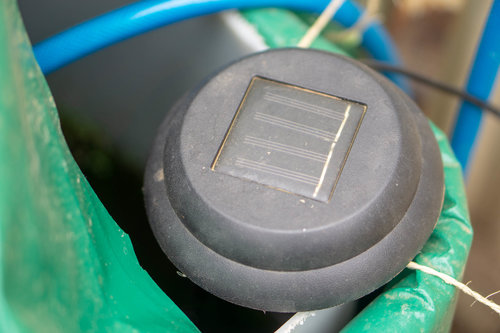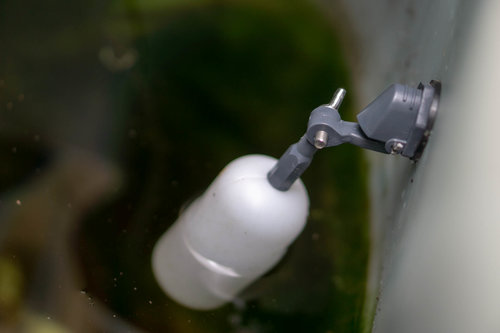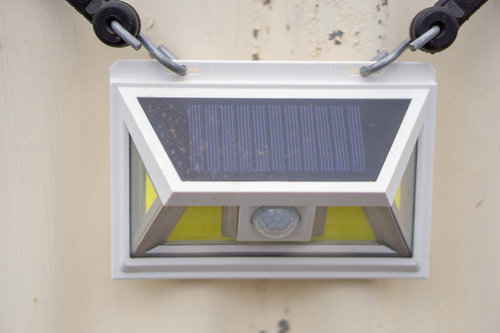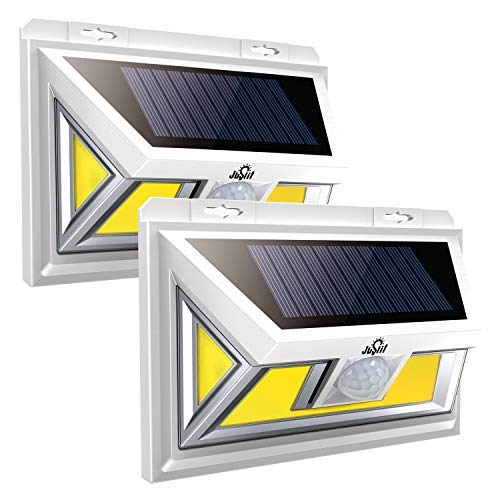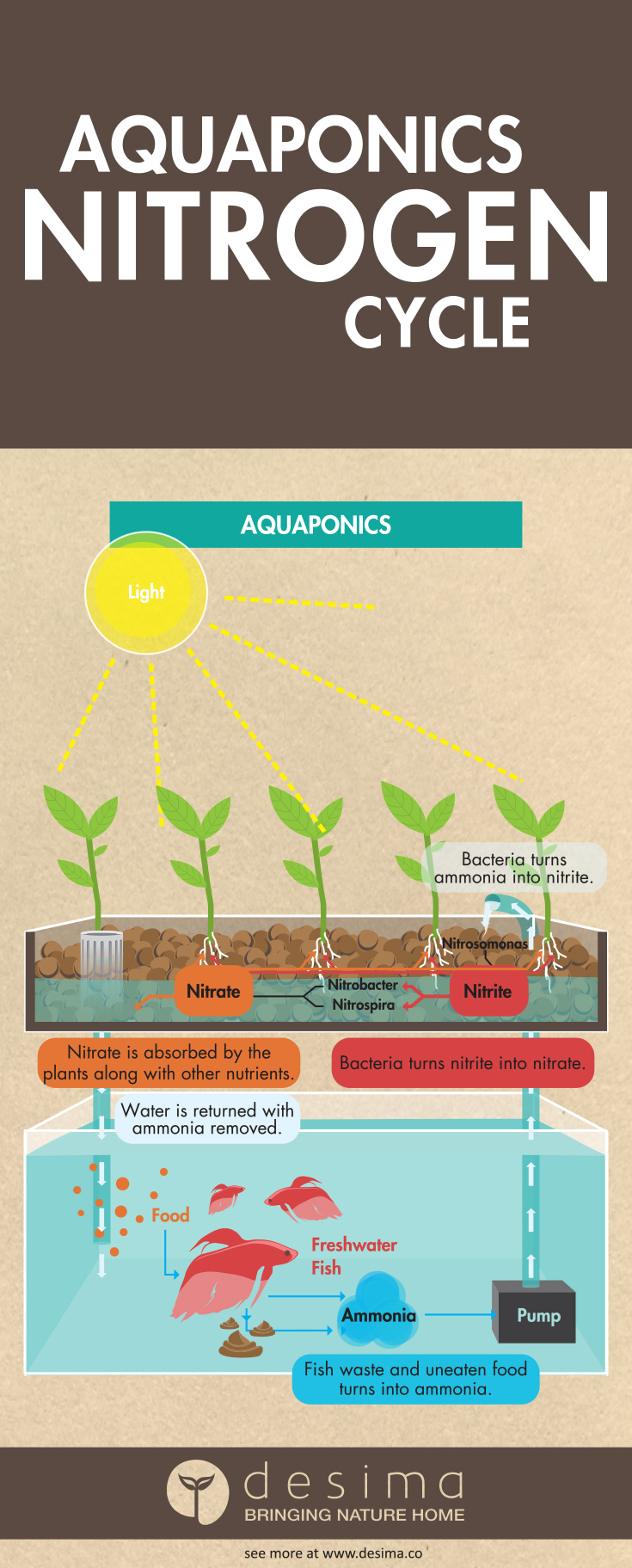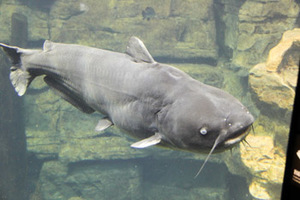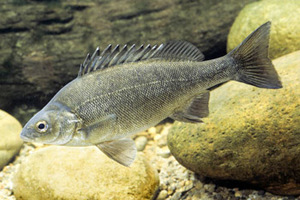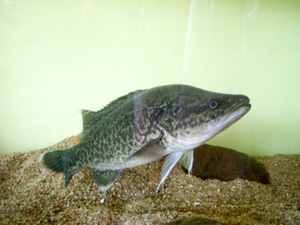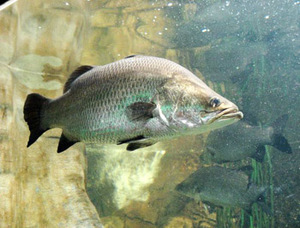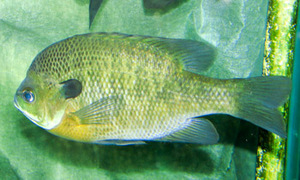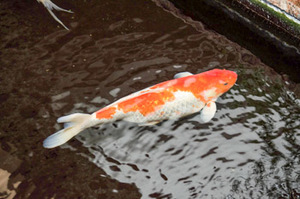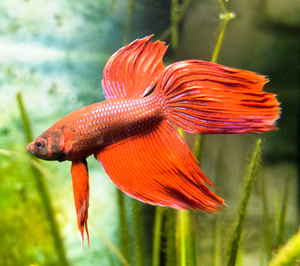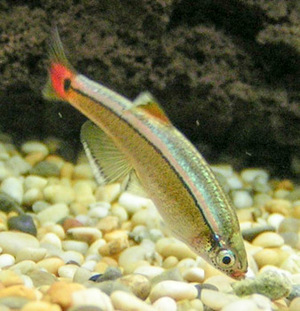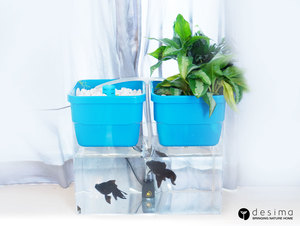Mite Munchers Biological Pest Controls
by Alex Owen
Unfortunately, pests are an inevitable problem facing ALL gardeners and farmers at one point or another. Controlling these bug populations has always presented a quite the challenge for aquaponic growers and farmers. There are so few pesticides that are 100% guaranteed not to be toxic for fish. When dealing with closed-looped systems, especially when those systems are enclosed in a greenhouse, you will soon find yourself with an out-of-control infestation unless you have a reliable system of pest control in place.
When a pest population requires treatment, the best way to deal with it head on is to use biodiversity to our advantage by educating biological control. Biological control is defined by using one species to control another. For crops and plants, we supply and release ladybugs to eat aphids (although they will eat other soft bodied prey as well), predatory mites to combat spider mites, and I welcome the many species of spiders that spin their webs over plant beds and provide a fantastic catching and killing service. We also use a wide range of nematodes for use on soil crops and fruits (although you can use some species on the plant living bugs also). Predatory wasps also do a very good job as they can seek out high numbers of pests for laying (injecting) their eggs in, the young then use the host as a first meal! Usually within a matter of days, they then burst from the infected host into the world and carry on the cycle started by their parents, a single wasp can have a HUGE impact, there can be up to 100+ young emerging from a single host!!
Biological control is a complex field that requires an understanding of the life cycles of the pests and the beneficial species, and it can not replace preventative practices unless actioned correctly. I always like to start early with treatment plans and over treat certain hotspots picked up on from previous years of growing.. With biological controls there are a lot of benefits to commercial growers and certainly for use in aquaponics due to the sensitiveness of the fish used in the systems.At Mite Munchers we strive to be in front of the problems caused by pests! For any questions you may have head over to our Facbook page @ https://www.facebook.com/mitemunchers/ or try our Garden Pest Control Help Page @ Alex Owen – Mite Munchers Biological Pest Controls
Unfortunately, pests are an inevitable problem facing ALL gardeners and farmers at one point or another. Controlling these bug populations has always presented a quite the challenge for aquaponic growers and farmers. There are so few pesticides that are 100% guaranteed not to be toxic for fish. When dealing with closed-looped systems, especially when those systems are enclosed in a greenhouse, you will soon find yourself with an out-of-control infestation unless you have a reliable system of pest control in place.
When a pest population requires treatment, the best way to deal with it head on is to use biodiversity to our advantage by educating biological control. Biological control is defined by using one species to control another. For crops and plants, we supply and release ladybugs to eat aphids (although they will eat other soft bodied prey as well), predatory mites to combat spider mites, and I welcome the many species of spiders that spin their webs over plant beds and provide a fantastic catching and killing service. We also use a wide range of nematodes for use on soil crops and fruits (although you can use some species on the plant living bugs also). Predatory wasps also do a very good job as they can seek out high numbers of pests for laying (injecting) their eggs in, the young then use the host as a first meal! Usually within a matter of days, they then burst from the infected host into the world and carry on the cycle started by their parents, a single wasp can have a HUGE impact, there can be up to 100+ young emerging from a single host!!
Biological control is a complex field that requires an understanding of the life cycles of the pests and the beneficial species, and it can not replace preventative practices unless actioned correctly. I always like to start early with treatment plans and over treat certain hotspots picked up on from previous years of growing.. With biological controls there are a lot of benefits to commercial growers and certainly for use in aquaponics due to the sensitiveness of the fish used in the systems.
Advantages of biological pests control
- There is few or no detrimental effect on other organisms or even humans.
- Pests rarely resist biological control.
- Often the results are permanent or for a long time.
- Harmful insecticides are not used.
- Cost/benefit ratio very favorable.
- Avoid secondary pests.
- There are no problems of intoxication of fish and water.
Ten Best Tips for Aquaponics Success using biological controls:
Avoid duckweed The number one problem with new growers and with those interested in aquaponics is the use or the recommended use of duckweed. Yes fish, specifically tilapia, will eat duckweed with gusto, and yes the duckweed will repopulate faster than the fish can eat it. It’s this info that makes it very attractive as a fish feed to aquaponic growers. We’ve even seen claims that duckweed is around 40% protein and that it is perfect diet for those trying to grow a high protein fish.
Be careful using tap water This is one of the biggest mistakes of first time growers in their aquaponics systems. Most of the cities in the world add chlorine and fluoride to their water. Specifically chlorine can be deadly to fish. If the only access to fresh water you have is through your tap you need to “off gas” the water before letting you fish come in contact with it. If you are setting up a brand new system you can do this by adding the water to the fish tank and letting it sit for 48/72 hours with the aeration unit going. If you have a running system and need to add water to it, you need to off gas.It before you add it to the system. If public utilities is your only access to water it would behoove you to keep a steady supply of off gassed water, just in case.
Don’t add too many fishThose starting out tend to want to grow as many fish as possible as quickly as possible. The problem with this is that an overcrowd fish tank results in stunted growth and high nitrate levels, affecting the health of the fish. When starting out with a system for the first time, keep your stocking densities low. Colleagues recommend one pound of fish for every five gallons of water in your fish tank. This is lower than the generally accepted densities but from expert experience low densities do not hinder plant growth and over the lifetime of the system create a more stable environment. In addition it will save you money in feed which adds up over the lifetime of your system. Unless you are growing on a large commercial scale it is highly unlikely that the fish portion of your system will be profitable. As a small scale or hobby grower you should be looking to keep the fish side of the operation as low as possible to maximize your margins. Don’t make the mistake of overstocking, you can always add fish later, it’s a cruel waste to stock too densely and end up losing fish.Plan your Pest Management Strategy Even if you are growing indoors you’ll want to have a plan that you may never need than get caught with unwanted pests. If you are growing outside you definitely want to have a pest management plan. Pests are really the only threat to your plants’ health in aquaponics. A simple Google search for organic pest management will bring up a variety of source material on how to manage pests easily. I promote organic pest management in every case possible, the benefits for us as humans is huge!! By using beneficial insects you will also make your life a lot easier as they do all the hard work for you by hunting out all the pests and dealing with them in various ways.. Choose methods that pertain to the crops you are growing and the region you are in. Some pests are native to certain regions and some are widespread. It is up to you to determine the actions you need for your aquaponic project size and location.
Test Your WaterThe success of any aquaponics system lies in the water. The flip side of that coin is true as well, most failures lie in poor water. Aquaponics is a living ecosystem and nutrient levels in your water fluctuate over the course of time. If certain levels fluctuate too far from where we want them then it can affect the health of our fish and plants in a bad way. The good news is that once a system is established it is very stable and takes minimal maintenance.
Design your first system with industry standards In addition to experience, the best way is to build up your assumptions with industry best standard math based on already existing systems. So if you are looking to start your first system, look to the internet and those who have experience in aquaponics and utilize their designs for systems. There is no need to reinvent the wheel in this regard. When you do branch out to designing your own systems keep them simple. Do not overcomplicate your design and always design your system around one waterpump. Take advantage of gravity to move water freely whenever you can. Adding more than one pump into the design almost never works out and only causes headaches down the road.
Use a pH neutral media Another common mistake in aquaponics comes in choosing their media. The issue with almost all media is that they will affect your pH in some way, at least initially. For instance, people use expanded shale in systems. This expanded shale raises pH, in large systems it generally raises it .51pH. This quick initial raise can affect the health of plants and fish and for that reason it is advisable not to add either until a few days after the shale is added. Over the course of about 6 months the pH lowers slowly back to an acceptable range for both the plants and fish. However, there are other suitable options for media that do not affect the pH. These include hydroton and lava rock. On the flip side one example of unacceptable media is limestone. Limestone affects the pH in an irreversible manner and will affect the health of both the fish and the plants. While it is attractive because of its availability and cheap price tag it is not suitable for aquaponics operations. To test to see if the media you picked affects pH, Test the pH of your water, and then add water to a cupful of media and test the pH 2448 hours later. If it has changed significantly you can be certain that your media will affect the pH of your system.
Do not use harmful additives Aquaponic gardens are systems of relationship and balance. Generally speaking an excessively high or low pH will find equilibrium over time. This is called “returning to homeostasis.” Some people are impatient and resort to using chemical such as muriatic acid to lower their pH. Chemicals will lower your pH but they are untested in aquaponics and many of them may harm the health of your fish and plants.
Ensure proper circulation Make sure your fish tank turns over once per hour. Another key component to maintaining good health in your system is consistent turnover of the fish tank. Make sure that the volume of your fish tank turns over at least once per hour. This comes down to proper pump selection and over sizing your plumbing to prevent clogging. In general it is better to oversize your pump as their efficiency does deteriorate over their lifespan. Over sizing your pump gives you more life out of your pump as well as ensuring you get proper circulation throughout your system. More turnovers, more the better.
Always keep back up equipment The success of your aquaponics system comes down to the success of your equipment. In everyAquaponics system there is typically a water pump, an air pump and water heaters. Each of these items is key to your system’s health and there for the success of your system. Because these different pieces of equipment are so critical, every successful aquaponic gardener has a backup of each of these pieces. Pumps and heaters do not last a lifetime and they can fail without any previous warning signs. You don’t want to risk losing your fish because you didn’t have a backupPump on hand. It is too risky to assume that your local aquarium or hydroponics store will have the materials you need. Plus, if your pump goes at midnight you will likely a nightmare on your hands before you can get to a store. To the new gardener, backups might seem like an unnecessary expense but every experienced gardener will tell you: take the expense on up front,Because if you aren’t prepared it will cost you more in the long run. Worst case scenario for being prepared is that you never need to use your backups.
Most popular biological controls used in aquaponic and farming
1. Beneficial Insects (my favorite) This form of “bio-control” consists of adding and raising populations of beneficial insects (lady bugs, aphides wasps, etc) to feed on bugs that eat your plants. . Lady bugs will devour up to 50 aphids, mealy bugs, scale, leaf hoppers, or other destructive pests per day! You YOURSELF can even serve as a surprisingly effective live “biocontrol” with a high powered spray bottle or hose and a wet cloth! If you have just a few pests, putting such beneficial organisms to work in your system will help prevent many pest outbreaks and big infestations. I always over treat hot-spots from previous years with predators to avoid a large outbreak happening again second year round.. With the use of beneficial insects in aquaponics it us usually best to purchase the slow release sachets so the insects can make their own way out onto the plants, using the vials containing the predators and vermiculite could be dangerous if not done carefully because when sprinkled over the plants vermiculite could drop into fish tank and be harmful if consumed by the fish.
2. Biological Sprays Another type of “biocontrol” (as in not synthetically-produced) method for dealing with more stubborn bug populations involves making homemade remedies or buying commercial pesticide sprays made out of organic plant materials or animal byproducts. Examples include garlic/pepper/onion sprays, worm casting tea, fungi spore sprays, and my personal favorite “Mite Munchers Magic Mist”, this is our specially formulated powerful organic insecticide and fungicide, this had worked wonders for me for years and I recently started bottling it up and reselling it, only to find I cant make enough of it to cover the strong demand!! I make it out of a list of organic oils and two other organic ingredients making it safe for all consumables!! Magic Mist has the power to keep plants at peak health purely with the ingredients used not to mention keeping all bugs and fungus at bay!! It can also be diluted and fed to the very young plants and will provide a great start in life making them stronger and a little more prepared for the world!! The two methods of pest control (aka “biocontrols“) are all that most backyard gardeners usually need to combat pests and prevent infestations of many pesky bugs.
3. Soap Sprays Used in moderation, (worst case scenario) diluted glycerin based soaps applied to plant foliage are the least toxic “synthetic chemical” substance you can use to control pests in your aquaponic garden. NOTE: be extra careful not to let large quantities of soap getting into your fish tank. Soap is dangerous to fish in significant quantities. Fill a spray bottle with a few drops of glycerin-based soap and spray onto infested area of the plant foliage (careful not to spray or let a ton drip into the media bed itself). Or purchase a pre-made soap spray that comes perfectly diluted for your organic gardening needs like: Indoor Pharm Organic Insecticide and Fungicide, With Pure Rosemary and Almond Oil. Made with certified organic glycerin-based soap, almond oil, and rosemary oils Controls insects and prevents fungal spores from traveling and maturing to disease Will prevent powdery mildew Indoor Pharm is safe for use on herbs and edibles Controls fungus gnats, aphids, spider mites, whiteflies and scale.
Again, take note that excessive soap scum can clog fish gills and potentially kill your fish. So like everything else on this document moderation is key!
4. Neem Oil Spray Neem Oil Sprays are handy for use as an “on-the-spot” treatment for when you see a few pests or to combat small infestations.Neem oil organic pesticide spray, also something that you can grab directly from Mite Munchers.Neem Oil Spray is an all purpose insecticide, miticide, and fungicide for organic gardening. Neem oil can be used on virtually any plant, including roses, flowers, vegetables, herbs, spices, houseplants, trees, turf, and shrubs. Kills all stages of insects, eggs, larvae, and adults. Makes a great dormant spray. Imparts healthy shine to leaf surfaces.
5.AzaMax AzaMax Antifeedant and Insect Growth Regulator is a natural product with a broad spectrum of pest control. AzaMax contains Azadirachtin A and B as active ingredients and uses only food grade formulation ingredients — no hard chemical solvents. Works by starving and disrupting the growth of insects (making them weaker and easier to kill). Effective on spider mites, thrips, fungus gnats, aphids, whiteflies, leaf miners, worms, beetles, leafhoppers, scales, mealy bugs, nematodes and other soil borne pests.










